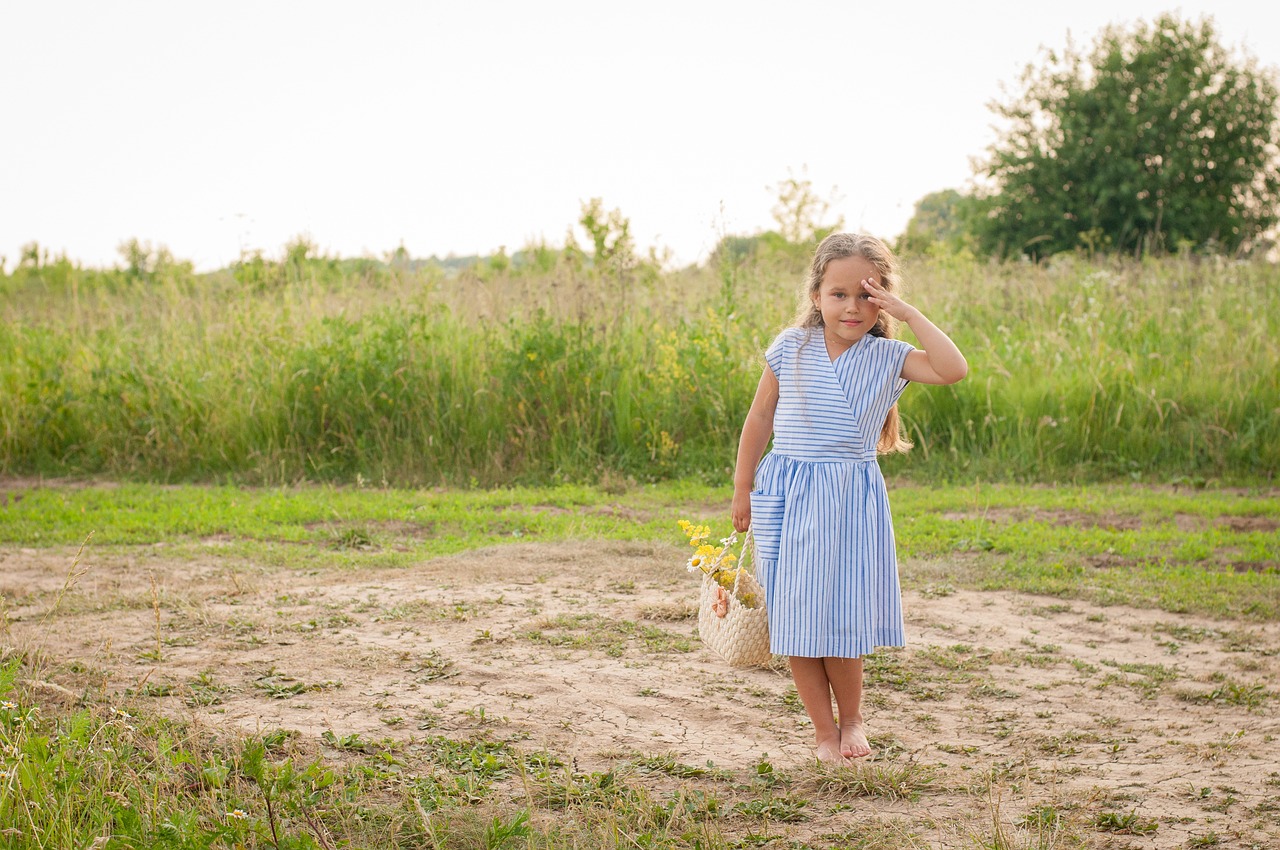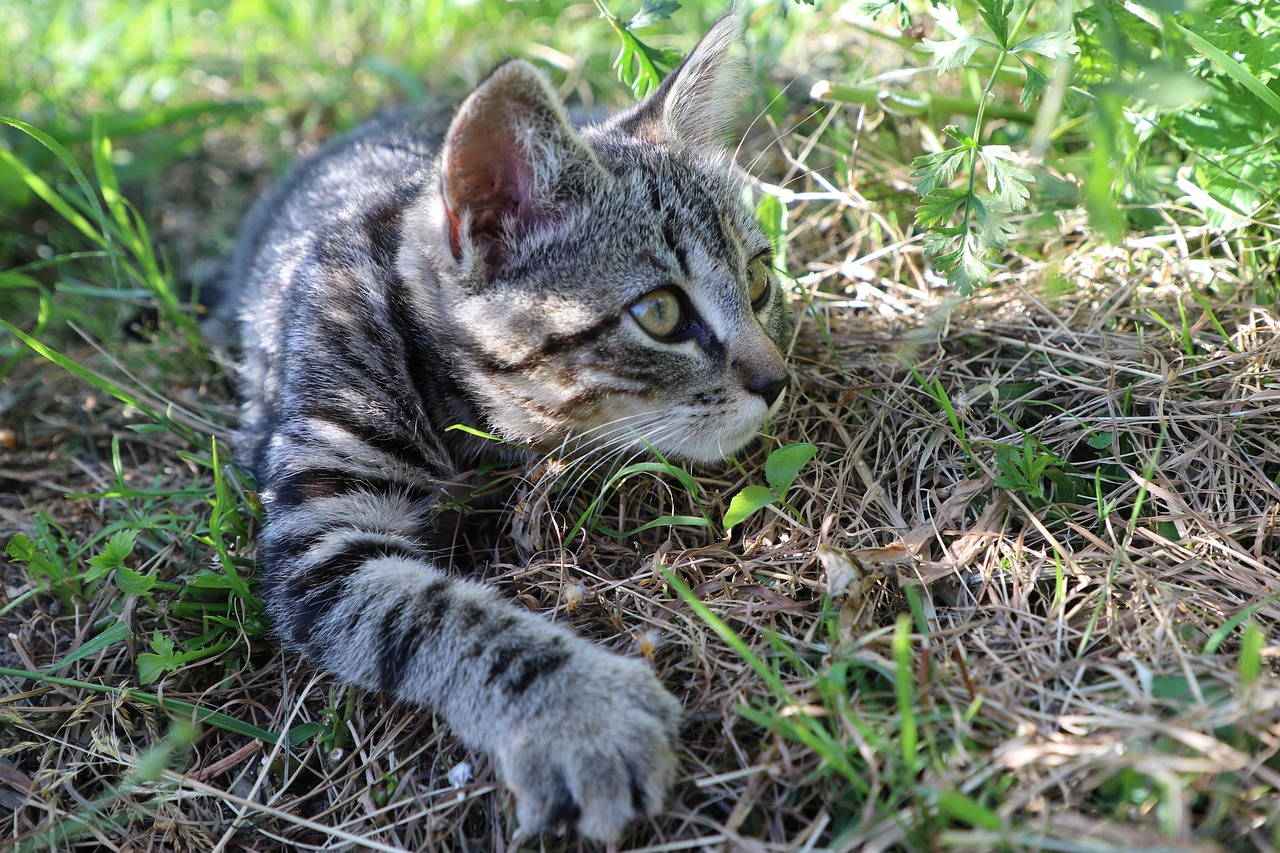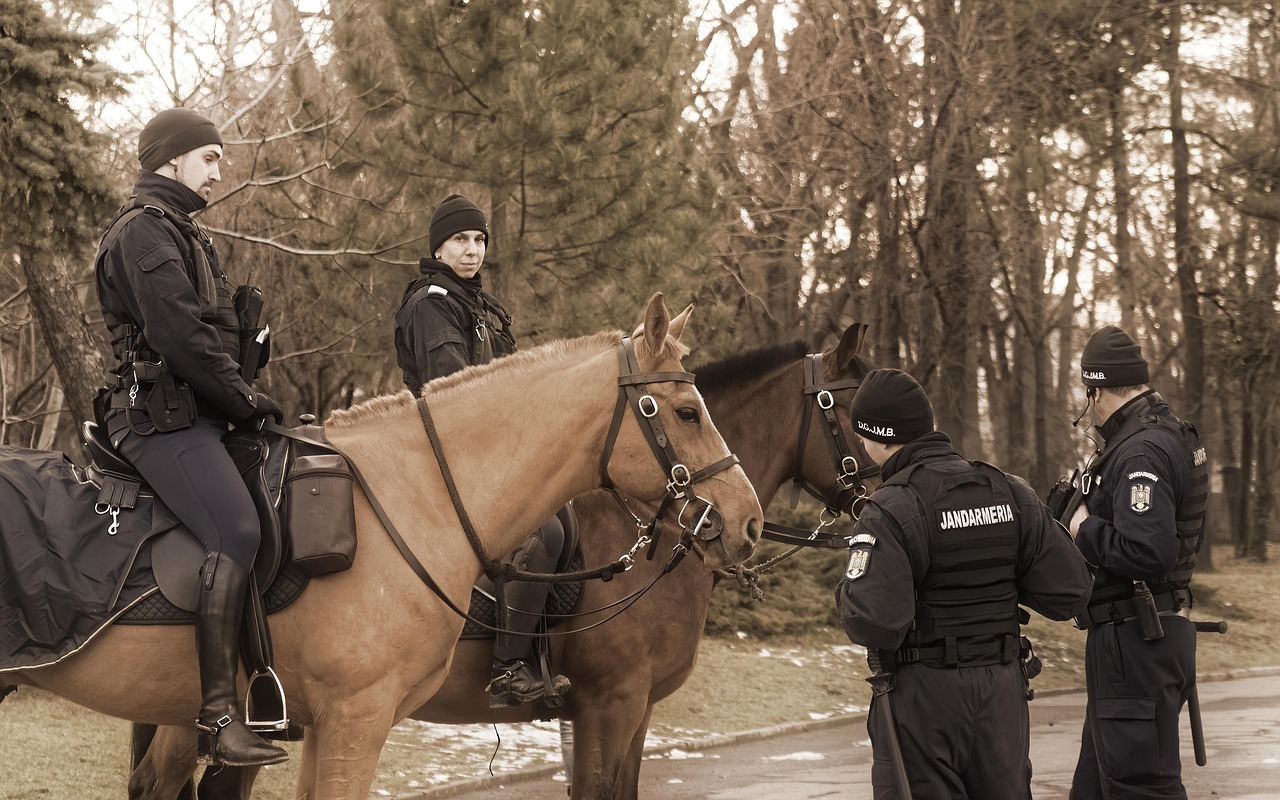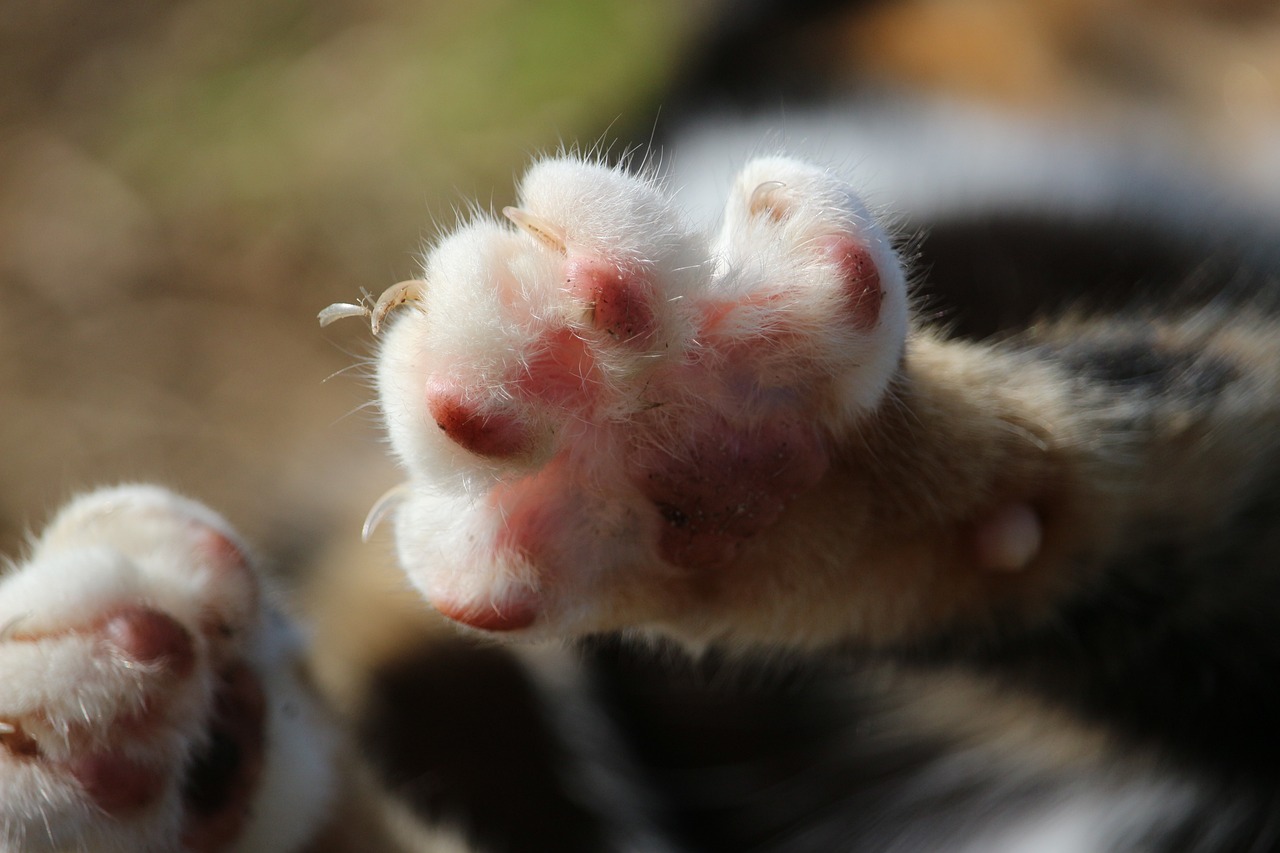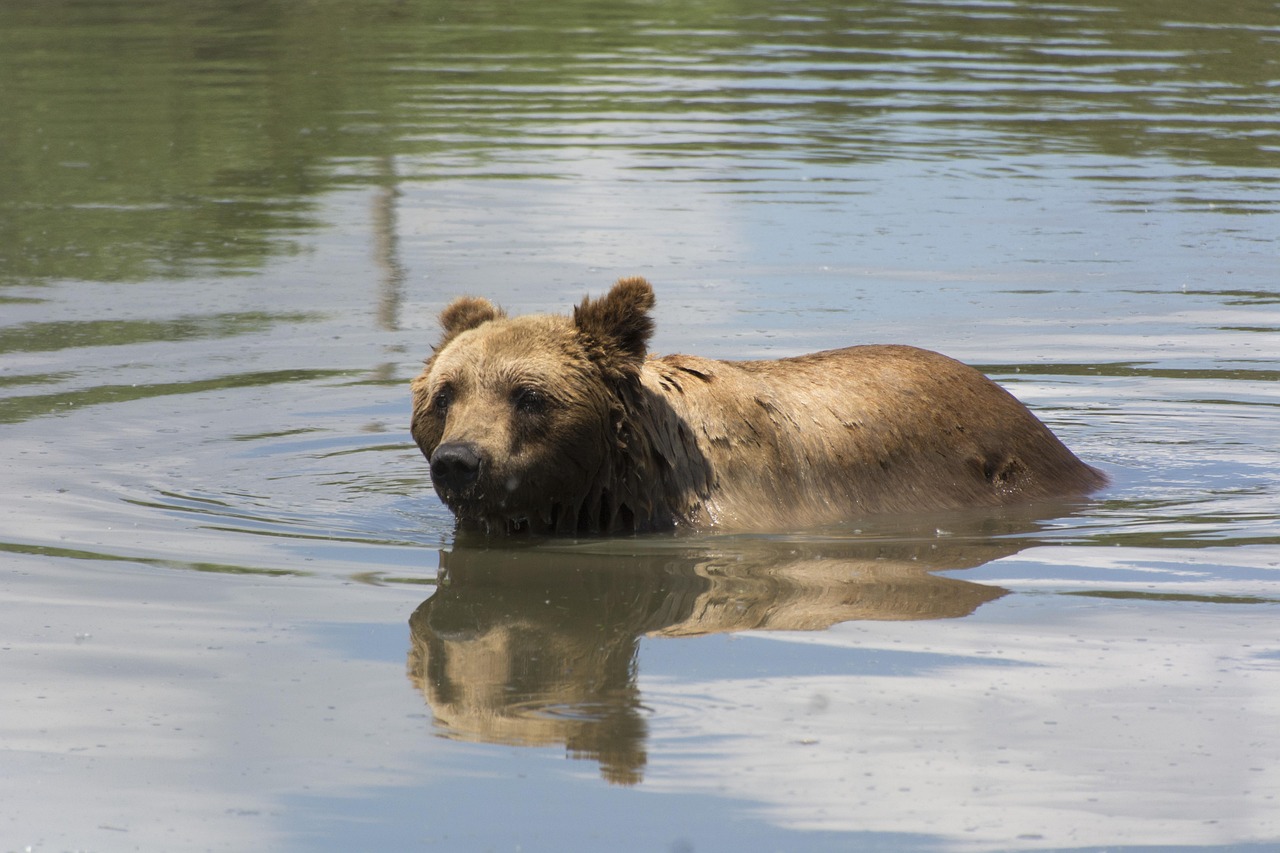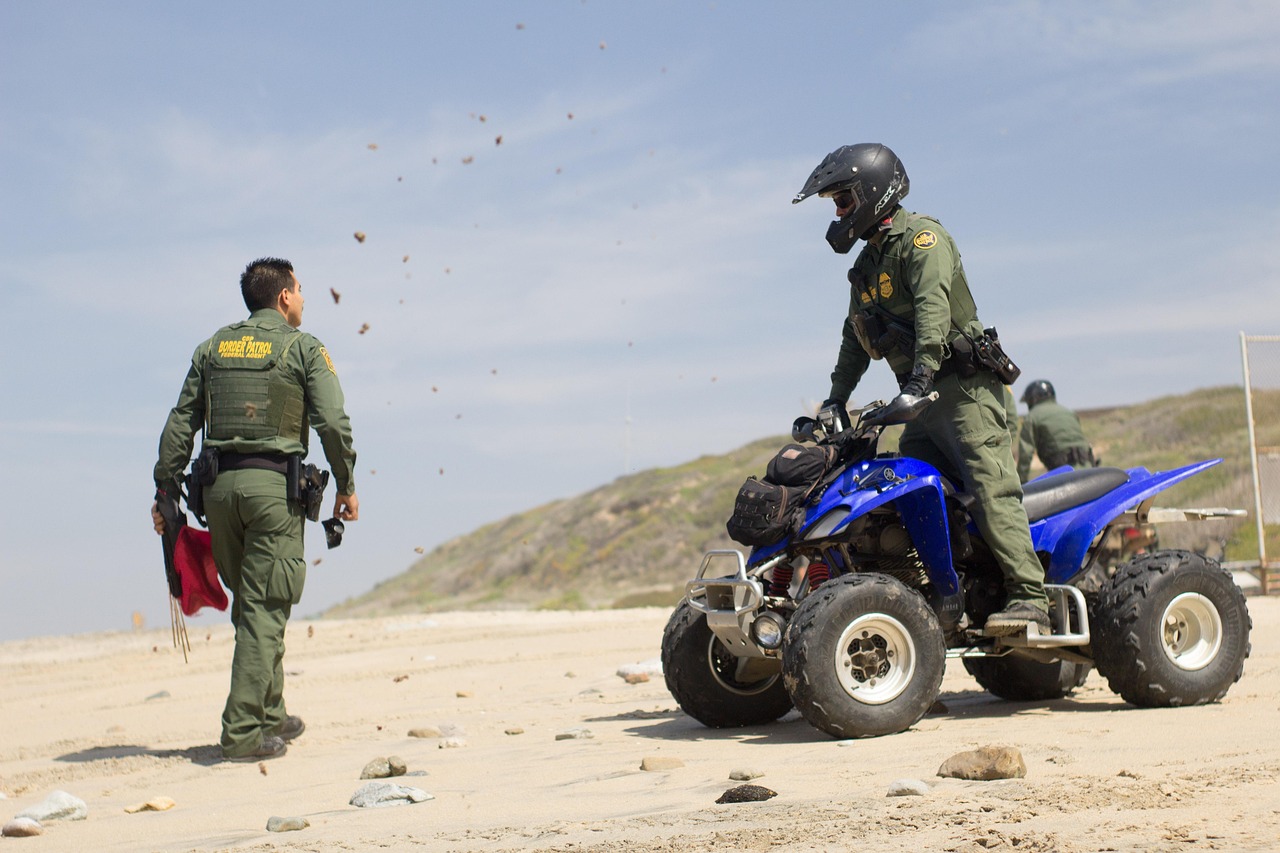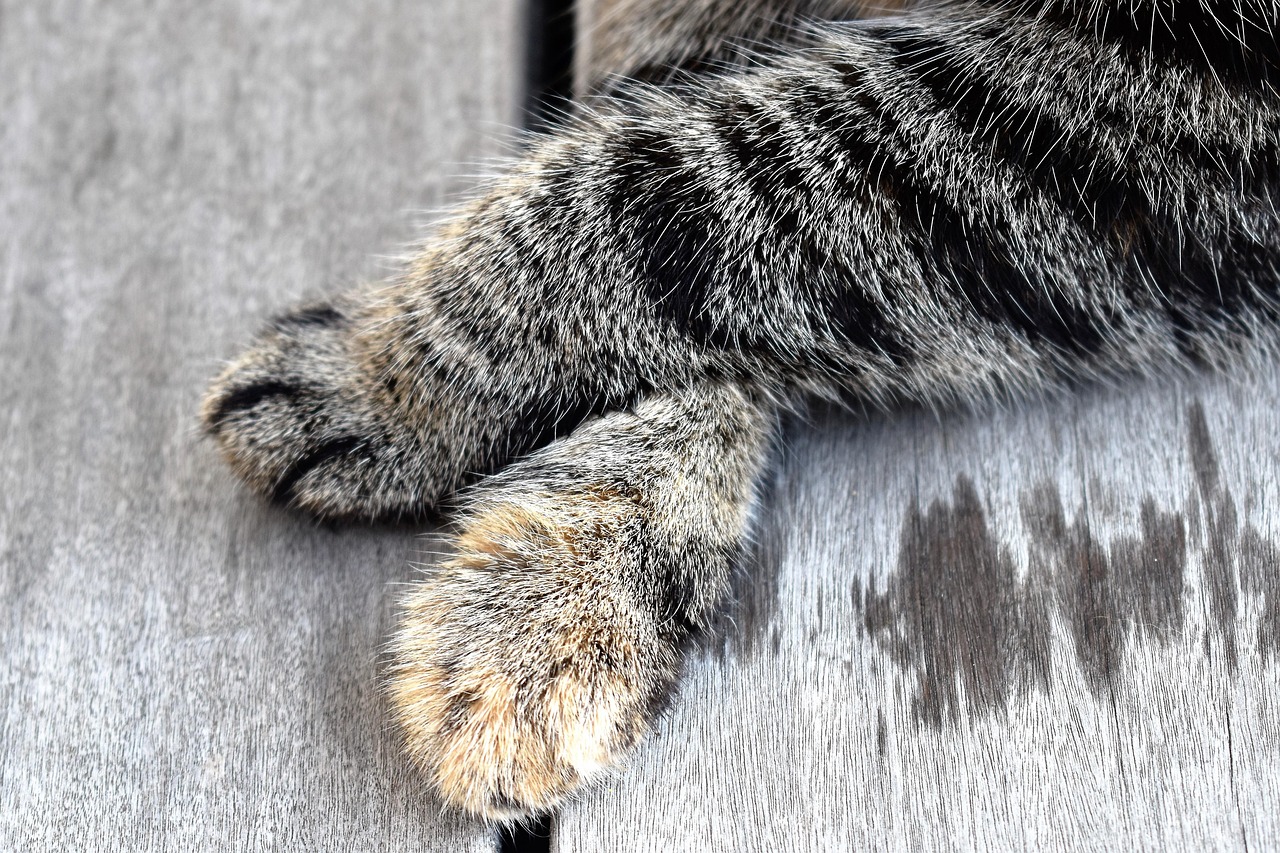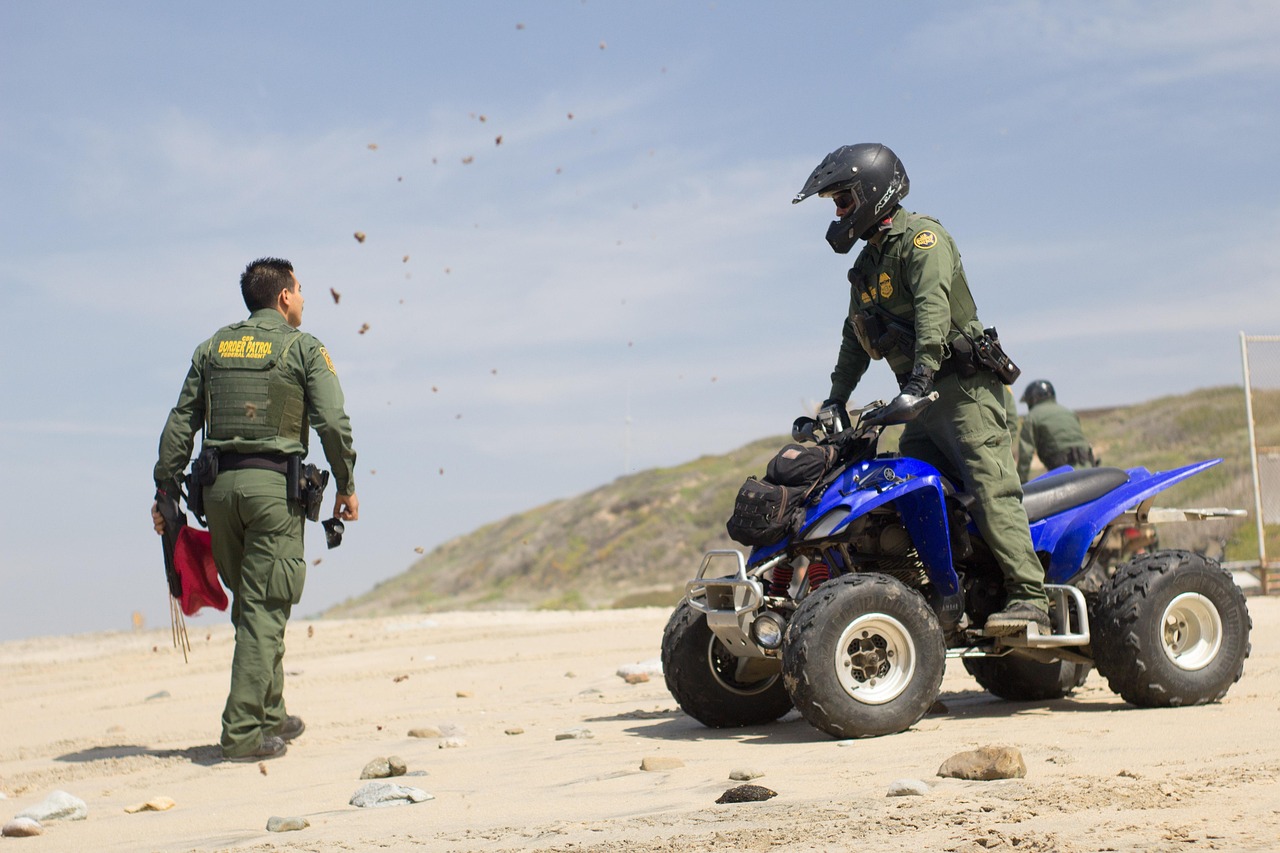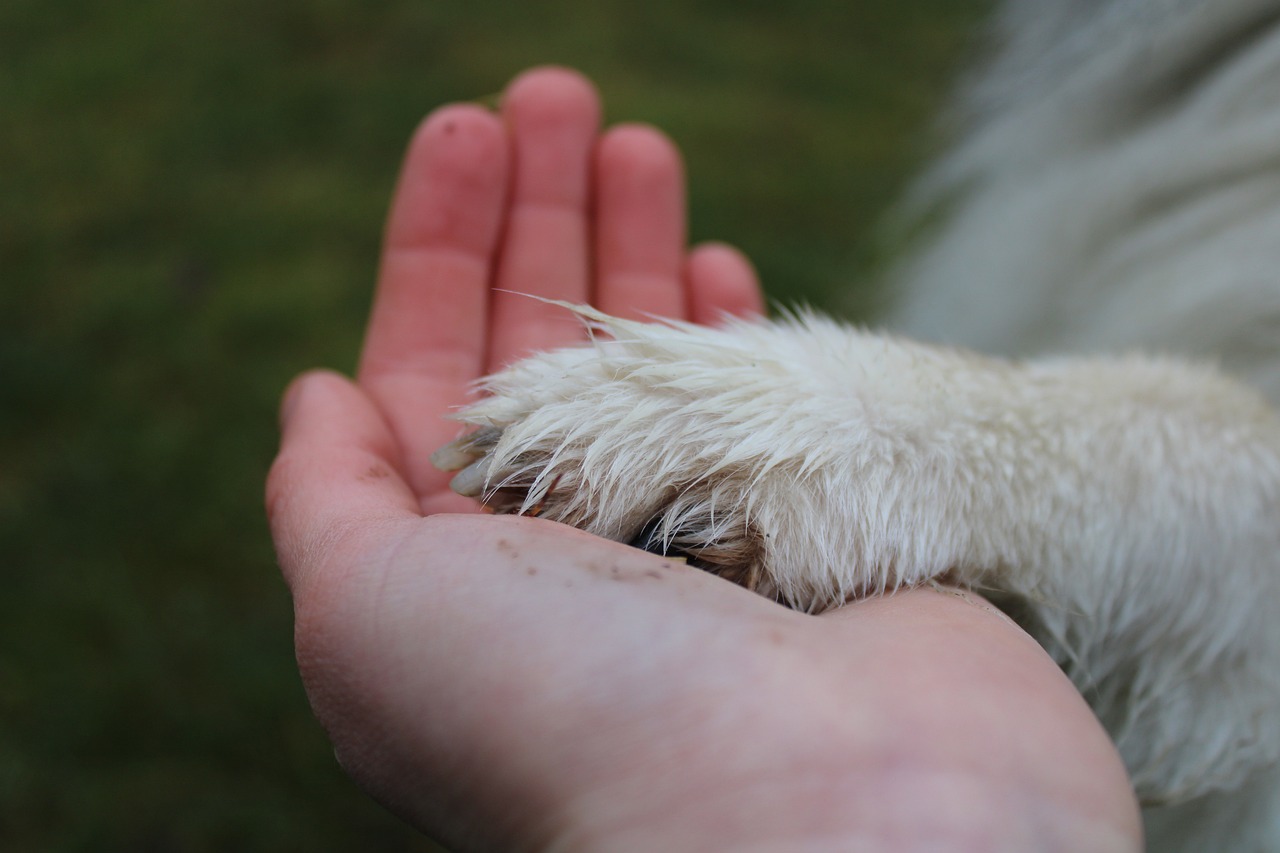Ryder is the heart and soul of the beloved children’s series Paw Patrol. As the 10-year-old leader, he embodies the essence of bravery, intelligence, and resourcefulness. His character not only drives the plot but also serves as a beacon of teamwork and problem-solving for young viewers. This article delves into Ryder’s significant role, his key traits, and the positive influence he has on the show’s underlying themes.
Ryder is introduced as a young boy with exceptional leadership skills. He coordinates a diverse team of pups, each with unique abilities, to tackle various challenges in Adventure Bay. His confidence and compassion are evident as he guides his team through rescue missions, always prioritizing safety and teamwork.
Ryder exemplifies several admirable qualities that make him an effective leader. His key traits include:
- Leadership: Motivates and inspires his team.
- Empathy: Shows understanding and support for his friends.
- Problem-solving skills: Quickly assesses challenges and formulates solutions.
Ryder’s leadership is characterized by his ability to delegate tasks based on each pup’s strengths. This ensures that all team members feel valued and essential to the mission’s success.
Clear communication is vital for Ryder. He articulates instructions effectively, maintaining an open dialogue with his team. This approach fosters a sense of trust and collaboration among the pups, enhancing their teamwork.
In emergencies, Ryder’s ability to make swift decisions is crucial. He evaluates situations rapidly, demonstrating critical thinking and adaptability under pressure, which are valuable lessons for young viewers.
As the leader of the Paw Patrol, Ryder plays a pivotal role in teaching the importance of collaboration and friendship. His guidance helps the pups understand that working together is essential to achieving their goals.
Ryder emphasizes teamwork by involving each pup in missions. He teaches them to rely on one another’s strengths, reinforcing the idea that they can accomplish more together than alone.
When conflicts arise, Ryder steps in to mediate, teaching the pups effective strategies for resolving disagreements. His approach models constructive conflict resolution for young viewers, demonstrating the importance of communication and understanding.
Equipped with high-tech gadgets and vehicles, Ryder is always prepared for rescue missions. His use of technology not only reflects modern problem-solving tools but also captivates children’s interest in innovation.
Ryder’s All-Terrain Vehicle (ATV) is a versatile tool that allows him to navigate various terrains. This vehicle symbolizes his readiness to tackle any challenge the Paw Patrol faces, showcasing adaptability and preparedness.
The PupPad and other communication devices Ryder uses facilitate coordination during missions. These gadgets represent the significance of technology in teamwork and effective communication, illustrating how modern tools can enhance collaboration.
Ryder serves as a positive role model for children, imparting essential life skills such as teamwork, empathy, and leadership. His character promotes values that are crucial for personal development.
Through his actions, Ryder inspires children to take initiative and lead by example. His character encourages young viewers to develop leadership qualities in their own lives, fostering a sense of responsibility and confidence.
Ryder’s problem-solving approach teaches children to think critically and creatively when faced with challenges. This skill is invaluable as they navigate their own lives, equipping them with the tools needed to overcome obstacles.

Who is Ryder in Paw Patrol?
Ryder is not just any ordinary 10-year-old; he is the courageous and intelligent leader of the Paw Patrol, a group of heroic pups dedicated to helping their community. His role in the beloved children’s series extends far beyond simple leadership. Ryder embodies the essence of teamwork, problem-solving, and compassion, making him a pivotal character in the show.
As the central figure in Paw Patrol, Ryder is known for his unwavering bravery and quick thinking. He coordinates various rescue missions, guiding his team of pups with a blend of confidence and compassion. Each episode showcases Ryder’s ability to assess situations and devise effective plans to tackle challenges, reinforcing the show’s core theme of teamwork.
Ryder possesses several key traits that make him an exemplary leader:
- Leadership: Ryder’s leadership style is inclusive and motivating. He ensures that every pup feels valued and understands their role in the mission.
- Empathy: He demonstrates a deep understanding of others’ feelings, often comforting those in distress and encouraging his team to express their emotions.
- Problem-Solving: Ryder approaches challenges with a critical mindset, teaching young viewers the importance of thinking creatively when faced with obstacles.
Ryder’s influence on team dynamics is profound. He fosters an environment where collaboration thrives. By involving each pup in missions, he emphasizes the importance of teamwork and the idea that they can achieve more together.
Through his actions, Ryder instills the value of teamwork. He often assigns tasks based on each pup’s unique skills, ensuring that everyone contributes to the mission’s success. This not only builds confidence among the pups but also reinforces the message that working together leads to better outcomes.
Ryder also plays a crucial role in resolving conflicts. When disagreements arise, he steps in to mediate, teaching the pups effective strategies for resolving issues. This aspect of his character models essential conflict resolution skills for young viewers, showing them how to handle disagreements amicably.
Ryder is equipped with an array of high-tech gadgets and vehicles that enhance his leadership capabilities. His use of technology not only aids in rescue missions but also engages children’s interest in innovation.
One of Ryder’s most notable tools is his All-Terrain Vehicle (ATV). This versatile vehicle allows him to navigate various terrains, symbolizing his readiness to tackle any challenge the Paw Patrol faces. The ATV is not just a means of transportation; it represents his adaptability and resourcefulness.
Ryder’s communication devices, including his PupPad, facilitate coordination during missions. These gadgets are essential for maintaining clear communication with his team, showcasing the importance of technology in teamwork and effective problem-solving.
Ryder serves as a positive role model for children, teaching them valuable life skills such as teamwork, empathy, and leadership. His character promotes essential values that contribute to personal development and social responsibility.
Through his actions, Ryder inspires children to take initiative and lead by example. His character encourages young viewers to cultivate leadership qualities in their own lives, demonstrating that anyone can be a leader with the right mindset and attitude.
Ryder’s approach to problem-solving teaches children the importance of critical and creative thinking when faced with challenges. This skill is invaluable, equipping them to handle various situations as they grow older.

What are Ryder’s Key Traits?
Ryder, the charismatic leader of the Paw Patrol, is not just a fictional character; he embodies a range of admirable qualities that resonate deeply with young audiences. His role as a leader is pivotal, and the traits he exhibits serve as a blueprint for positive behavior and personal development among children. In this section, we delve into the key traits that define Ryder and explore how they contribute to his effectiveness as a leader and role model.
At the core of Ryder’s character is his exceptional leadership ability. He demonstrates a unique capacity to inspire and motivate his team of pups, fostering an environment where collaboration thrives. By understanding each pup’s individual strengths and weaknesses, Ryder effectively delegates tasks, ensuring that everyone plays a vital role in their missions. This approach not only enhances the team’s efficiency but also instills a sense of belonging and purpose among the pups.
Ryder’s communication skills are crucial in maintaining the harmony and effectiveness of the Paw Patrol. He communicates instructions clearly and encourages open dialogue, which fosters trust and collaboration. This emphasis on communication teaches young viewers the importance of expressing their thoughts and feelings, reinforcing the idea that teamwork relies on understanding one another.
In high-pressure situations, Ryder’s ability to make swift and informed decisions is vital. He assesses challenges rapidly and chooses the best course of action, showcasing his critical thinking skills. This trait not only helps him navigate emergencies but also teaches children the value of staying calm and collected when faced with difficult choices.
Ryder’s empathetic nature is one of his most commendable traits. He consistently shows concern for his team and the community, often providing comfort to those in distress. His supportive demeanor encourages the pups to express their feelings and reinforces the importance of understanding and compassion. This aspect of Ryder’s character serves as a powerful lesson for young viewers about the significance of empathy in building strong relationships.
By modeling empathetic behavior, Ryder helps children develop emotional intelligence. His interactions with the pups illustrate how to navigate complex emotions and foster a supportive environment. This teaches young viewers that being kind and understanding can lead to more meaningful connections with others.
Ryder is not just a leader; he is also a skilled problem solver. His approach to challenges emphasizes the importance of thinking critically and creatively. When faced with obstacles, Ryder encourages the pups to brainstorm solutions, illustrating the value of teamwork in overcoming difficulties. This trait not only enhances the narrative of the show but also equips children with essential problem-solving skills they can apply in their own lives.
Through his adventures, Ryder demonstrates how to analyze situations and devise effective strategies. This aspect of his character encourages children to engage in critical thinking, helping them understand that every problem has a solution if approached with the right mindset. By showcasing various scenarios where creative solutions are necessary, Ryder inspires young viewers to think outside the box.
Ryder serves as a positive role model for children, teaching them essential life skills such as teamwork, empathy, and leadership. His character promotes values that are crucial for personal development, making him an integral part of the Paw Patrol experience. By embodying these key traits, Ryder not only entertains but also educates, shaping the next generation of leaders and compassionate individuals.
Leadership Skills
Ryder’s Leadership Skills are a cornerstone of the beloved children’s series Paw Patrol. As the 10-year-old leader of a team of heroic pups, Ryder exhibits a remarkable ability to motivate and inspire those around him. His leadership style is not just about giving orders; it is about fostering an environment where each team member feels valued and empowered to contribute their unique skills.
One of the most significant aspects of Ryder’s leadership is his delegation of tasks. He recognizes that each pup possesses distinct abilities, which he skillfully utilizes to ensure the success of their missions. For example, while Chase excels in police work, Skye shines in aerial rescues. By assigning roles that align with their strengths, Ryder not only boosts the pups’ confidence but also enhances the overall efficiency of the team.
Moreover, Ryder’s approach to leadership emphasizes team collaboration. He often gathers the pups to discuss strategies and brainstorm solutions, reinforcing the idea that teamwork is vital for overcoming challenges. This collaborative spirit is evident in episodes where the pups face daunting tasks, such as rescuing animals or assisting in community events. Ryder encourages open communication, allowing each pup to express their thoughts and ideas, which fosters a sense of belonging and unity.
Effective communication is another key trait of Ryder’s leadership. He is adept at conveying instructions clearly and concisely, ensuring that every member understands their role in the mission. This clarity not only helps avoid confusion but also builds trust within the team. Ryder’s ability to listen actively to his pups’ concerns and suggestions further strengthens their bond, making them feel heard and respected.
In high-pressure situations, Ryder’s decision-making skills shine through. He remains calm and composed, quickly assessing the circumstances and determining the best course of action. For instance, during emergencies, Ryder evaluates the risks and benefits of various options, demonstrating critical thinking under pressure. This ability to make swift, informed decisions is essential for a leader, especially when lives are at stake.
Ryder’s leadership is not solely focused on tasks and missions; it also encompasses empathy and support. He shows genuine care for his team, often comforting them when they face setbacks or challenges. This nurturing aspect of his leadership encourages the pups to express their feelings and seek help when needed, promoting emotional intelligence and resilience.
Furthermore, Ryder plays a vital role in conflict resolution within the team. When disagreements arise, he steps in to mediate, teaching the pups how to resolve conflicts amicably. His approach models effective strategies for young viewers, illustrating the importance of communication and compromise in maintaining harmonious relationships.
Through his exemplary leadership, Ryder not only guides his team in their missions but also instills valuable life skills in young viewers. His character embodies the principles of teamwork, empathy, and problem-solving, making him a positive role model for children. By showcasing these traits, Ryder inspires a new generation to embrace leadership qualities in their own lives.
In summary, Ryder’s leadership is characterized by his ability to motivate, inspire, and empower his team of pups. By delegating tasks based on individual strengths, fostering collaboration, and demonstrating effective communication, he creates a supportive environment where everyone can thrive. His decision-making skills and empathetic nature further enhance his role as a leader, making him an exemplary figure for young audiences.
Communication
Effective communication is a cornerstone of Ryder’s leadership in the Paw Patrol series. As the young leader of a diverse team of pups, Ryder must ensure that his instructions are not only clear but also understood by each member of his team. This ability to communicate effectively fosters a sense of trust and collaboration, which is essential for the success of their missions.
Ryder’s communication style is characterized by his openness and approachability. He encourages his team to share their thoughts and feelings, which helps to create a supportive environment. This open dialogue allows the pups to express any concerns they may have, ensuring that everyone feels valued and heard. By promoting such an atmosphere, Ryder enhances the team’s ability to work together seamlessly, making them more effective in high-pressure situations.
In addition to verbal communication, Ryder utilizes various tools and technologies that aid in conveying messages. His PupPad, for instance, is not just a gadget; it serves as a vital communication device that allows him to send instructions and updates swiftly. This technological integration highlights the importance of modern communication methods in teamwork, making it relatable for young viewers who are growing up in a digital age.
Ryder’s communication skills also extend to his decision-making processes. When faced with emergencies, he must relay information quickly and clearly to ensure that all team members understand their roles. His ability to assess situations rapidly and communicate the best course of action demonstrates his critical thinking skills, which are crucial in maintaining the safety and efficiency of their operations.
Moreover, Ryder’s empathetic communication style plays a significant role in his leadership. He often takes the time to listen to his team’s concerns, providing reassurance and support. This empathetic approach not only strengthens the bond between Ryder and the pups but also reinforces the idea that effective communication is not just about relaying information; it’s about understanding and connecting with others on an emotional level.
Ryder’s commitment to fostering open communication also sets a powerful example for young viewers. By showcasing the importance of listening and expressing oneself, he teaches children valuable lessons about interpersonal relationships and teamwork. This emphasis on communication helps to instill a sense of responsibility and accountability among the pups, as they learn that their voices matter in the decision-making process.
In conclusion, Ryder’s ability to communicate effectively is a vital aspect of his leadership in Paw Patrol. His combination of clarity, empathy, and technological integration not only enhances team dynamics but also serves as a model for young audiences. By illustrating the significance of communication in achieving common goals, Ryder inspires children to develop their own communication skills, fostering a generation that values collaboration and understanding.
Decision-Making
In the world of Paw Patrol, Ryder stands out as a remarkable leader, especially when it comes to his decision-making skills. These abilities are not just important; they are crucial during emergencies where the stakes are high and every second counts. Ryder’s quick thinking and ability to make swift decisions exemplify his role as a dependable leader.
When faced with a crisis, Ryder doesn’t panic. Instead, he assesses situations rapidly, gathering all necessary information before acting. This skill is vital in ensuring that he chooses the best course of action. For instance, when a situation arises that requires immediate attention, Ryder quickly evaluates the resources available and the potential risks involved. His critical thinking skills shine through as he weighs the pros and cons of each possible solution.
One of the key aspects of Ryder’s decision-making process is his ability to remain calm under pressure. This composure not only helps him think clearly but also instills confidence in his team. The pups look up to him, knowing that he will guide them through any challenge they face. This dynamic is particularly important in the context of teamwork, as Ryder often needs to make decisions that affect the entire team.
Moreover, Ryder’s quick decision-making is complemented by his empathy and understanding of his team members’ strengths and weaknesses. He often delegates tasks based on each pup’s unique skills, ensuring that everyone is in a position to succeed. This not only enhances the efficiency of their operations but also promotes a sense of unity among the team. When Ryder makes decisions, he considers how each choice will impact not just the mission but also the morale and well-being of his pups.
In addition to his inherent skills, Ryder utilizes technology to aid his decision-making process. His PupPad allows him to communicate effectively with his team and access vital information quickly. This technological support enhances his ability to make informed choices, ensuring that he can act decisively even in the most challenging situations.
Ryder’s decision-making abilities also serve as a valuable lesson for young viewers. By watching him navigate complex scenarios, children learn the importance of critical thinking and the need to stay calm in stressful situations. These lessons resonate beyond the screen, encouraging kids to develop similar skills in their own lives.
In summary, Ryder’s quick decision-making abilities are a cornerstone of his leadership in Paw Patrol. His capacity to assess situations rapidly, remain calm under pressure, and make informed choices not only ensures the success of their missions but also teaches valuable life lessons about teamwork, empathy, and problem-solving. As a role model, Ryder inspires children to think critically and act decisively, preparing them for the challenges they may face in their own lives.
Empathy and Support
Ryder, the central character of the beloved children’s series Paw Patrol, exemplifies the essence of empathy and support. His ability to connect with his team and the broader community is a defining trait that sets him apart as a leader. Through his compassionate actions, he not only comforts those in distress but also creates a nurturing environment where everyone feels valued and understood.
- Understanding Emotions: Ryder possesses a remarkable ability to recognize and understand the emotions of his team members. This skill is particularly important when the pups face challenges or feel overwhelmed. By acknowledging their feelings, he fosters a sense of belonging and encourages them to express themselves openly.
- Providing Comfort: In moments of distress, Ryder is always there to offer a comforting presence. Whether it’s a pup feeling anxious about a mission or a community member facing a tough situation, his supportive nature shines through. He listens attentively and offers reassuring words, which helps to alleviate fear and anxiety.
- Encouraging Open Communication: Ryder promotes a culture of open communication within the Paw Patrol. He encourages the pups to share their thoughts and feelings, reinforcing the idea that it’s okay to seek help when needed. This practice not only strengthens their bond but also enhances their teamwork.
- Modeling Empathy: By demonstrating empathy in his interactions, Ryder serves as a role model for the pups and young viewers alike. His actions teach valuable lessons about the importance of compassion and understanding in relationships, both in the show and in real life.
Building Team Cohesion
Ryder’s empathetic approach plays a crucial role in building team cohesion among the pups. He understands that each member has unique strengths and weaknesses, and his supportive nature helps them to work together harmoniously.
- Celebrating Individual Strengths: Ryder takes the time to recognize and celebrate each pup’s individual strengths, which fosters a sense of pride and belonging. This acknowledgment motivates the pups to contribute their best efforts during missions, knowing that their unique abilities are valued.
- Encouraging Teamwork: By emphasizing the importance of teamwork, Ryder helps the pups to understand that they can achieve more together than they can alone. His encouragement to rely on one another’s strengths reinforces the idea that collaboration is key to overcoming challenges.
- Conflict Resolution: When conflicts arise, Ryder steps in to mediate with empathy and understanding. He teaches the pups how to resolve disagreements amicably, demonstrating that conflicts can be addressed through open dialogue and mutual respect.
Ryder’s Impact on the Community
Ryder’s empathy extends beyond the Paw Patrol team; it also encompasses the community they serve. His willingness to help those in need illustrates the importance of community support and compassion.
- Community Engagement: Ryder often engages with community members, listening to their concerns and offering assistance. His proactive approach helps to build trust and strengthens the bond between the Paw Patrol and the community.
- Promoting Kindness: Through his actions, Ryder promotes a culture of kindness and support. He encourages the pups to lend a helping paw to those in need, instilling the values of generosity and compassion in young viewers.
In summary, Ryder’s embodiment of empathy and support is a cornerstone of his leadership style. His ability to connect with his team and the community fosters an environment where feelings are acknowledged and valued. By modeling these qualities, Ryder not only enhances the dynamics of the Paw Patrol but also serves as an inspiring example for children, teaching them the importance of compassion and teamwork in their own lives.

Ryder’s Role in Team Dynamics
Ryder’s role in the Paw Patrol series is not just that of a leader; he is the cornerstone of teamwork and collaboration among the pups. His approach to leadership is multi-faceted, focusing on building strong relationships and fostering a sense of community within the team.
As the central figure in Paw Patrol, Ryder embodies the essence of effective leadership. He understands that to achieve their goals, the pups must work together. This understanding leads him to create an environment where every member feels valued and important.
- Involvement of All Team Members: Ryder ensures that each pup has a role in their missions, playing to their individual strengths. This not only boosts their confidence but also emphasizes the importance of collaboration.
- Encouraging Communication: Ryder promotes open dialogue among the team, encouraging them to share ideas and perspectives. This practice cultivates a culture of trust and mutual respect.
Ryder teaches the pups that friendship is a vital component of teamwork. He often reminds them that their bonds are what make them stronger. By emphasizing the importance of supporting one another, he nurtures a sense of belonging, which is crucial for their success.
In any team, conflicts are inevitable. Ryder’s ability to mediate disputes is a testament to his leadership skills. He approaches conflicts with a calm demeanor, guiding the pups to resolve their issues amicably. Through these interactions, Ryder teaches valuable conflict resolution skills that young viewers can apply in their own lives.
Ryder’s leadership extends beyond just managing the team; he actively engages the pups in problem-solving during their missions. By involving them in the decision-making process, he encourages critical thinking and creativity. This hands-on approach not only helps them tackle challenges effectively but also instills a sense of ownership and responsibility.
The impact of Ryder’s leadership on the dynamics of the Paw Patrol team is profound. He creates a supportive environment where each pup can thrive. His ability to balance authority with empathy ensures that the team operates smoothly, even in high-pressure situations.
Ryder often puts the pups in challenging situations to help them grow. He believes that overcoming obstacles together strengthens their bonds and builds resilience. This approach teaches the pups that while challenges may arise, they can always rely on each other for support.
The lessons imparted by Ryder extend beyond the screen. Children watching Paw Patrol learn about the importance of teamwork, empathy, and leadership. Ryder’s character serves as a role model for young viewers, inspiring them to develop these essential skills in their own lives.
In conclusion, Ryder’s role in Paw Patrol is pivotal in shaping the values of teamwork and friendship. His leadership style not only guides the pups in their missions but also serves as a valuable lesson for children, demonstrating the power of collaboration and the importance of supporting one another in achieving common goals.
Encouraging Teamwork
In the world of Paw Patrol, teamwork is not just an essential theme; it is the very foundation upon which the adventures of Ryder and his team of pups are built. Ryder, the young and charismatic leader, plays a crucial role in instilling the value of collaboration among his team members. This emphasis on teamwork not only enhances their effectiveness during missions but also fosters a sense of camaraderie and friendship.
Ryder’s approach to teamwork is multifaceted. He actively involves each pup in the planning and execution of missions, ensuring that everyone has a role that aligns with their unique strengths. For instance, when a mission requires speed, he might assign Chase to take the lead, while Marshall might be tasked with providing support through his firefighting skills. This strategic delegation not only boosts the pups’ confidence but also reinforces the idea that they are stronger together than they are alone.
In addition to task delegation, Ryder teaches his team the importance of communication. Effective communication is vital in any team dynamic, and Ryder ensures that each pup understands their responsibilities and the overall mission objectives. When they face challenges, he encourages open dialogue, allowing the pups to express their thoughts and ideas. This practice not only enhances teamwork but also cultivates an environment of trust and respect.
Ryder’s leadership style also includes teaching the pups how to rely on one another during challenging situations. For example, when a mission becomes complicated, he encourages the pups to brainstorm solutions together. This collaborative problem-solving approach not only leads to successful outcomes but also instills critical thinking skills in the young viewers who watch the show. Children learn that by combining their ideas and skills, they can overcome obstacles that may seem insurmountable.
Moreover, Ryder’s ability to mediate conflicts among the pups is another vital aspect of his role in promoting teamwork. Disagreements are natural in any group setting, and Ryder steps in to guide the pups through conflict resolution. By modeling effective strategies for resolving disputes, he teaches valuable lessons about compromise and understanding. This not only helps the pups maintain their friendships but also demonstrates to young viewers the importance of handling conflicts in a constructive manner.
The impact of Ryder’s emphasis on teamwork extends beyond the screen. As children watch the pups work together to achieve their goals, they are inspired to apply these lessons in their own lives. They learn that collaboration can lead to greater success, whether in school projects, sports, or other group activities. Ryder’s teachings encourage children to value their peers and recognize the unique contributions that each individual brings to a team.
In summary, Ryder’s dedication to fostering teamwork among the Paw Patrol pups is a central theme of the series. By actively involving each pup in missions, promoting effective communication, encouraging collaborative problem-solving, and guiding conflict resolution, Ryder exemplifies the power of teamwork. His character not only serves as a role model for young viewers but also instills essential life skills that will benefit them throughout their lives.
Conflict Resolution
In the vibrant world of Paw Patrol, conflict resolution plays a crucial role in teaching young viewers valuable life skills. Ryder, the ever-reliable leader of the Paw Patrol, often finds himself mediating disputes among his team of pups. His interventions not only resolve immediate issues but also impart essential lessons on how to handle disagreements constructively.
When tensions arise between the pups, Ryder steps in with a calm demeanor and a clear strategy. He encourages open communication, allowing each pup to express their feelings and perspectives. This practice fosters an environment where everyone feels heard and valued. Effective communication is a cornerstone of Ryder’s approach, as he demonstrates how to articulate thoughts without resorting to anger or frustration.
Ryder also emphasizes the importance of empathy during conflicts. He teaches the pups to understand each other’s viewpoints, which helps them develop a sense of compassion. For instance, when two pups disagree over a toy, Ryder guides them to consider how the other pup feels, promoting a more thoughtful and caring resolution. This not only resolves the immediate issue but also strengthens their friendship.
In addition to communication and empathy, Ryder introduces the concept of compromise. He encourages the pups to find solutions that satisfy everyone involved. By modeling this behavior, Ryder shows that conflicts can lead to positive outcomes when all parties are willing to collaborate. This lesson is particularly significant for young viewers, as it equips them with the tools to navigate their own conflicts in a healthy manner.
Another key aspect of Ryder’s conflict resolution strategy is his ability to remain neutral. When mediating, he avoids taking sides, focusing instead on guiding the pups toward a resolution that benefits the entire team. This impartiality reinforces the idea that conflicts are not about winning or losing but about finding common ground. It teaches children that disagreements can be resolved amicably without damaging relationships.
Ryder’s conflict resolution techniques also involve practical problem-solving skills. He helps the pups brainstorm potential solutions to their disagreements, encouraging critical thinking. For example, if there’s a dispute about who gets to lead a mission, Ryder might suggest they take turns or work together on a joint project. This approach not only resolves the conflict at hand but also promotes teamwork and collaboration, which are essential skills in both personal and professional settings.
Ryder’s influence goes beyond immediate conflict resolution. By demonstrating these strategies, he instills a sense of responsibility in the pups. They learn that they can take an active role in resolving conflicts, empowering them to handle disagreements independently in the future. This empowerment is a vital lesson for young viewers, as it encourages them to take charge of their interactions and relationships.
In conclusion, Ryder’s role in teaching conflict resolution is invaluable. He provides young viewers with practical tools and strategies to navigate disagreements in their own lives. By promoting effective communication, empathy, compromise, and problem-solving, Ryder not only resolves conflicts among the pups but also equips children with essential skills that will serve them well as they grow. Through his guidance, Ryder exemplifies the power of teamwork and understanding, making him a remarkable role model for children everywhere.

Ryder’s Signature Gear and Technology
Ryder’s role as the leader of the Paw Patrol is significantly enhanced by his signature gear and technology. His high-tech gadgets and vehicles not only assist in rescue missions but also serve as a bridge to modern problem-solving methods, capturing children’s imaginations and inspiring an interest in innovation.
Ryder utilizes a variety of high-tech gadgets that play a crucial role in the success of each mission. These tools are designed to be both functional and educational, allowing children to understand the importance of technology in everyday life.
- PupPad: This multifunctional device is Ryder’s primary communication tool. It allows him to coordinate with the pups, access maps, and even control the vehicles remotely. The PupPad emphasizes the importance of effective communication and teamwork.
- Ryder’s Drone: Equipped with a camera, this drone assists in surveying areas that are hard to reach. It showcases the practical applications of technology in real-world scenarios, igniting children’s interest in STEM fields.
- Rescue Tools: Each gadget, from grappling hooks to underwater cameras, is specifically designed to tackle various challenges. They teach children about problem-solving and encourage them to think creatively when faced with obstacles.
Ryder’s vehicles are not just modes of transportation; they are essential tools that adapt to different terrains and situations. Each vehicle is equipped with unique features that enhance its functionality.
| Vehicle | Features | Purpose |
|---|---|---|
| All-Terrain Vehicle (ATV) | Off-road capabilities, high speed | Navigate various terrains during missions |
| Watercraft | Buoyancy, navigation systems | Rescue missions on water |
| Helicopter | Vertical takeoff, aerial view | Reach remote locations quickly |
Ryder’s use of technology engages children in a way that is both entertaining and educational. By showcasing gadgets and vehicles that mirror real-life tools, the show encourages young viewers to explore their own interests in technology and innovation.
Moreover, these elements highlight the significance of teamwork in conjunction with technology. Ryder demonstrates how collaboration and communication can enhance problem-solving capabilities, making challenges more manageable.
Through his adventures, Ryder serves as a role model for aspiring young innovators. He embodies qualities such as creativity, critical thinking, and the ability to adapt to new situations. This not only entertains but also empowers children to think about their own potential in solving problems.
In summary, Ryder’s signature gear and technology play a vital role in the Paw Patrol series. They not only facilitate rescue missions but also serve as tools for teaching children about the importance of technology, teamwork, and creative problem-solving. By engaging young minds with these modern tools, Ryder inspires a new generation of leaders and innovators.
Ryder’s ATV
Ryder’s All-Terrain Vehicle (ATV) is not just a mode of transportation; it is a vital asset that enhances his ability to lead the Paw Patrol effectively. This remarkable vehicle is engineered to navigate a variety of landscapes, from rugged mountains to sandy beaches, symbolizing Ryder’s unwavering readiness to face any challenge that comes his way.
Equipped with advanced technology, Ryder’s ATV is designed to adapt to different terrains, showcasing the importance of versatility in problem-solving. The vehicle’s robust capabilities allow Ryder to respond swiftly to emergencies, ensuring that he can reach those in need without delay. This adaptability is crucial, as the Paw Patrol often encounters unexpected situations that require quick thinking and efficient action.
What Makes Ryder’s ATV Unique?
- Multi-Terrain Capability: Whether it’s mud, snow, or rocky paths, Ryder’s ATV can tackle it all, demonstrating the importance of being prepared for any scenario.
- High-Tech Features: The ATV is outfitted with state-of-the-art gadgets, including a GPS system that helps Ryder locate pups and assess situations in real-time.
- Safety and Comfort: Designed with safety in mind, the vehicle ensures that Ryder remains secure while navigating challenging conditions, reinforcing the idea that safety is paramount in rescue operations.
Additionally, the ATV serves as a symbol of teamwork within the Paw Patrol. As Ryder uses it to reach his team and coordinate missions, it emphasizes the importance of collaboration. Each pup has a specific role to play, and the ATV enables Ryder to bring them together, reinforcing the notion that teamwork is essential for success.
Ryder’s ATV in Action
Throughout various episodes, Ryder’s ATV showcases its capabilities in high-stakes situations. For instance, during a rescue mission involving a stranded hiker, Ryder expertly navigates treacherous terrain, demonstrating not only the vehicle’s functionality but also his adept leadership skills. This scenario highlights how Ryder’s ATV is more than just a vehicle; it is a crucial tool that embodies his commitment to helping others.
The ATV also plays a role in teaching young viewers valuable lessons about problem-solving and adaptability. By observing how Ryder uses his vehicle to overcome obstacles, children learn the importance of thinking on their feet and finding creative solutions to challenges. This educational aspect is woven into the fabric of the show, making it both entertaining and instructive.
Conclusion
In summary, Ryder’s All-Terrain Vehicle is a pivotal element of his character and the Paw Patrol series. Its versatility, advanced technology, and role in promoting teamwork make it an essential tool for Ryder as he leads his team in various rescue missions. By showcasing the importance of adaptability and collaboration, Ryder’s ATV not only enhances the storyline but also instills valuable lessons in young viewers. As children watch Ryder navigate challenges with his trusty ATV, they are encouraged to embrace teamwork and problem-solving in their own lives.
Communication Devices
The utilized by Ryder in the Paw Patrol series play a crucial role in ensuring the smooth operation of rescue missions. Among these devices, the PupPad stands out as a multifunctional tool that enhances coordination and collaboration among the team. This technology not only facilitates effective communication but also embodies the show’s core themes of teamwork and problem-solving.
Ryder’s PupPad is equipped with various features that allow him to communicate instantly with each member of the Paw Patrol. This real-time communication is vital during emergencies, enabling the team to respond quickly and efficiently. The PupPad’s ability to send messages, share maps, and display mission details ensures that all pups are on the same page, minimizing confusion and maximizing effectiveness.
The integration of technology in the Paw Patrol not only makes the missions more exciting but also teaches young viewers the significance of modern communication tools. The devices symbolize how technology can enhance teamwork and collaboration. By utilizing tools like the PupPad, Ryder demonstrates that effective communication is essential for achieving common goals.
Ryder’s use of communication devices fosters a sense of trust among the pups. When each member feels informed and included, it strengthens their bond and encourages them to work together harmoniously. The PupPad serves as a bridge that connects Ryder with his team, allowing for open dialogue and feedback. This dynamic not only improves their operational efficiency but also builds a supportive atmosphere where each pup can express their thoughts and concerns.
In the face of challenges, effective communication becomes even more critical. Ryder’s ability to articulate problems clearly and delegate tasks based on each pup’s strengths showcases the importance of strategic communication in problem-solving. The PupPad allows Ryder to quickly assess situations and relay instructions, ensuring that the team can devise solutions collaboratively.
Through Ryder’s example, children learn the value of clear and respectful communication. The series emphasizes that listening is just as important as speaking, promoting a comprehensive understanding of effective dialogue. By showcasing how Ryder interacts with his team using the PupPad, the show instills essential communication skills in its young audience, preparing them for real-world interactions.
Ryder’s communication devices, particularly the PupPad, are more than just gadgets; they are integral to the success of the Paw Patrol missions. They highlight the significance of technology in fostering teamwork and effective communication. By portraying these elements, the show not only entertains but also educates young viewers about the importance of collaboration and problem-solving in their own lives.

The Impact of Ryder on Young Viewers
In the world of children’s entertainment, few characters resonate as deeply with young audiences as Ryder from the popular series Paw Patrol. His influence extends beyond mere entertainment; he serves as a positive role model for children, instilling essential life skills that are vital for personal growth. This article delves into the profound impact Ryder has on young viewers, emphasizing the values of teamwork, empathy, and leadership.
Ryder, the 10-year-old leader of the Paw Patrol, exemplifies qualities that every child should aspire to develop. His character is a beacon of positive behavior, showcasing how important it is to work together and support one another. Through his adventures, children learn the significance of collaboration and the power of community.
One of Ryder’s most significant contributions to children’s understanding of social interactions is his unwavering emphasis on teamwork. Each episode illustrates how he involves his team of pups in various missions, encouraging them to rely on each other’s strengths. This approach not only teaches children that they can achieve more together but also highlights the importance of each individual’s contribution to a group effort.
Ryder’s character is also instrumental in teaching empathy. He often comforts his team and the community members they help, demonstrating that understanding and compassion are key components of effective leadership. By modeling empathetic behavior, Ryder encourages young viewers to express their feelings and support their friends during difficult times.
Ryder’s leadership is characterized by his ability to motivate and inspire those around him. He delegates tasks based on each pup’s unique abilities, demonstrating that effective leadership involves recognizing and utilizing the strengths of others. This lesson is crucial for children as they navigate their own social environments, whether in school or extracurricular activities.
In addition to teaching teamwork and empathy, Ryder equips children with problem-solving skills. His quick decision-making abilities during emergencies showcase critical thinking under pressure. Young viewers observe how Ryder assesses situations and chooses the best course of action, encouraging them to think creatively when faced with challenges in their own lives.
Ryder also plays a vital role in teaching conflict resolution. When disagreements arise among the pups, he steps in to mediate, demonstrating effective strategies for resolving conflicts amicably. This portrayal of conflict resolution is invaluable for children, as it provides them with tools to manage their own disputes in a constructive manner.
Through his actions, Ryder inspires children to take initiative and embrace responsibility. He leads by example, showing that being a leader is not just about directing others but also about being accountable for one’s actions. This lesson is crucial for young viewers as they learn to navigate their own responsibilities at home, in school, and in their communities.
Ryder’s use of high-tech gadgets and vehicles not only adds excitement to the series but also reflects modern problem-solving tools. His communication devices, like the PupPad, demonstrate the importance of technology in teamwork and effective communication, engaging children’s interest in innovation while teaching them about the collaborative potential of technology.
Ultimately, Ryder’s character is more than just a leader of the Paw Patrol; he embodies the values of teamwork, empathy, and leadership that are essential for personal development. By presenting these qualities in a relatable and engaging manner, Ryder significantly influences young viewers, guiding them toward becoming responsible, compassionate, and proactive individuals.
Inspiring Future Leaders
Ryder, the charismatic leader of the Paw Patrol, serves as a beacon of inspiration for young viewers. His actions and decisions throughout the series not only entertain but also instill essential qualities in children that are pivotal for their personal growth. By showcasing leadership and initiative, Ryder encourages children to embrace their potential and lead by example.
One of the most significant aspects of Ryder’s character is his ability to motivate others. He demonstrates that leadership is not merely about authority; it is about inspiring those around you. Through his unwavering confidence and compassion, Ryder teaches children that being a leader involves understanding and uplifting others. This is particularly important for young viewers who are learning to navigate their own social environments.
Ryder’s character encourages children to take action in their own lives. For instance, when faced with challenges, he doesn’t shy away or wait for others to take charge. Instead, he steps up, assesses the situation, and formulates a plan. This proactive approach teaches children the value of taking initiative and the importance of being decisive when it matters the most. By watching Ryder, children learn that they, too, can make a difference in their communities by stepping forward in times of need.
Moreover, Ryder’s interactions with his team of pups highlight the importance of collaboration. He regularly emphasizes that every member of the Paw Patrol has unique strengths that contribute to the team’s success. This notion of teamwork is vital for young viewers, as it reinforces the idea that leadership is not a solitary endeavor but rather a collective effort. Children are encouraged to recognize the talents of their peers and to work together towards common goals.
Ryder also models effective problem-solving skills. When obstacles arise, he remains calm and assesses the situation thoroughly. His ability to think critically under pressure is an invaluable lesson for children, teaching them that challenges can often be overcome with creativity and teamwork. This aspect of his character encourages children to approach their own problems with a similar mindset, fostering resilience and adaptability.
In addition to his leadership and problem-solving abilities, Ryder’s empathy is a cornerstone of his character. He consistently shows concern for the well-being of his team and the community. By comforting those in distress and offering support, he demonstrates that a true leader cares for others. This emotional intelligence is crucial for children to develop as they learn to navigate their relationships and understand the feelings of those around them.
Ryder’s influence extends beyond the screen. His character serves as a role model for young viewers, encouraging them to cultivate their own leadership qualities. As children watch Ryder take initiative, resolve conflicts, and support his friends, they are inspired to embody these traits in their own lives. This empowerment can lead to a generation of children who are not only capable leaders but also compassionate individuals.
In conclusion, Ryder’s character in Paw Patrol is more than just a fictional leader; he is a source of inspiration for children everywhere. Through his actions, he teaches valuable lessons about leadership, teamwork, and empathy. By encouraging young viewers to take initiative and lead by example, Ryder helps shape the future leaders of tomorrow, instilling in them the confidence and skills they need to succeed.
Promoting Problem-Solving Skills
In the world of children’s media, characters often serve as more than just entertainment; they can be powerful educators. One such character is Ryder, the resourceful leader of the Paw Patrol. His adventures are not only thrilling but also packed with lessons that encourage problem-solving skills. This article delves into how Ryder’s approach to challenges can inspire children to think critically and creatively.
Ryder’s methods are a blend of logic, creativity, and teamwork. He demonstrates that when faced with a problem, it is essential to assess the situation thoroughly. By evaluating the resources available and the strengths of his team, Ryder teaches children the importance of strategic thinking. This skill is crucial, as it allows young viewers to understand that challenges can often be tackled from multiple angles.
Ryder often encounters scenarios that require him to make quick decisions. He models critical thinking by asking questions that prompt his team to think deeply about the situation. For example, when a mission involves rescuing a trapped animal, Ryder encourages the pups to consider various solutions, weighing the pros and cons of each. This approach not only enhances their problem-solving abilities but also fosters a sense of independence and confidence in their judgment.
In addition to critical thinking, Ryder emphasizes the value of creativity in problem-solving. He often encourages the pups to brainstorm innovative ideas when traditional methods fall short. This aspect of his character is particularly beneficial for young viewers, as it teaches them that there is often more than one way to approach a challenge. By promoting creativity, Ryder helps children understand that thinking outside the box can lead to effective solutions.
Ryder’s problem-solving approach is not just about individual skills; it heavily relies on teamwork. He regularly reminds his team that collaboration is key to success. By assigning tasks based on each pup’s unique abilities, Ryder illustrates the importance of leveraging collective strengths. This not only enhances the effectiveness of their missions but also teaches children the value of working together to achieve common goals.
The skills that Ryder instills in his team have real-life applications for children. As they grow older, the ability to think critically, creatively, and collaboratively becomes invaluable. Whether in school projects, sports, or social interactions, these problem-solving skills empower children to navigate challenges with confidence. Moreover, Ryder’s emphasis on empathy during problem-solving scenarios encourages children to consider the feelings and perspectives of others, fostering a sense of community and support.
Ryder’s problem-solving approach is a cornerstone of the Paw Patrol series, providing children with essential skills that extend beyond the screen. By promoting critical and creative thinking, teamwork, and empathy, Ryder equips young viewers with the tools they need to tackle challenges in their own lives. As they engage with his character and the adventures of the Paw Patrol, children learn that every problem can be an opportunity for growth and learning.
Frequently Asked Questions
- What makes Ryder a good leader in Paw Patrol?
Ryder’s leadership shines through his ability to inspire and motivate his team. He knows how to delegate tasks based on each pup’s strengths, ensuring everyone plays a vital role in their missions. Plus, his empathy and support create a trusting environment where the pups feel valued.
- How does Ryder teach teamwork among the pups?
Ryder emphasizes teamwork by involving all pups in every mission. He encourages them to rely on one another’s unique skills, demonstrating that collaboration leads to success. His guidance helps the pups understand that working together can achieve much more than working alone.
- What kind of technology does Ryder use?
Ryder is equipped with high-tech gadgets like his PupPad and an All-Terrain Vehicle (ATV). These tools not only assist in rescue missions but also illustrate the importance of technology in effective communication and problem-solving, making learning fun for kids!
- How does Ryder inspire young viewers?
Through his actions, Ryder inspires kids to embrace leadership, empathy, and critical thinking. He models problem-solving skills and encourages children to take initiative, helping them develop qualities that are essential for their personal growth.


